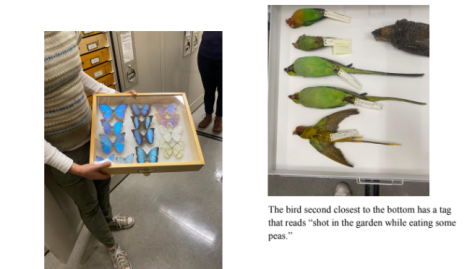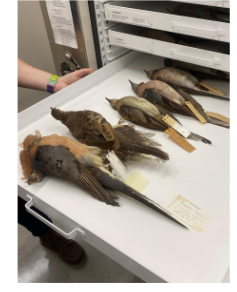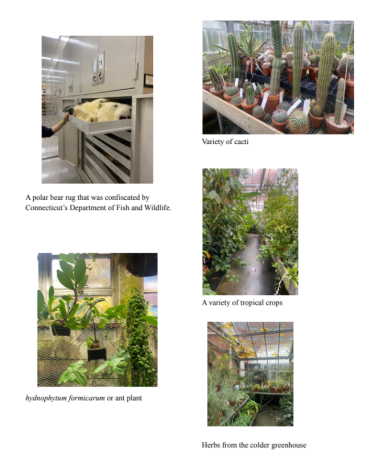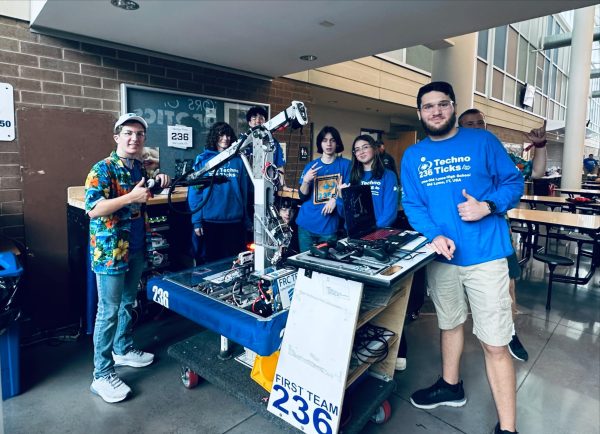Plants, Specimens, and Fossils, Oh My! Biology Students Visit UConn

This Tuesday, Mrs. Fried took her AP/ECE Biology class to the University of Connecticut. Upon arrival, they made their way over to the Biology & Physics building. There they met with three professors who guided them along the first part of the tour: Dr. Katrina Menard of insect collections, Dr. Erin Kuprewicz of mammal collections and Dr Sarah Taylor of herbarium and fossil records.
They first got to take a look at the Biological Research Collection. These archives were filled with thousands of insect, plant and vertebrate specimens; some even dated back to the 19th century! Before a specimen is put in the archives, they are frozen at -20 degrees Fahrenheit to kill any pests or bacteria. They are then kept in air-tight metal cabinets, stacked high to maximize the space. Some of these cabinets were opened and shown to the students. There they saw examples of allele variations and endangered species, among other things.

Various morpho butterflies.
After a look at the archives, the students took a walk to the greenhouses. There, they met Meghan Moriarty, the greenhouse manager and Dr. Matt Opel, the head of of greenhouse and living plants collections. Dr. Opel led their tour through each greenhouse, and described a number of characteristics from some of the plants
They got a look at the first, smaller greenhouse, where a fake cork tree stood. On that tree grew various epiphytes, or air plants. Many different plants hung from the ceiling. One plant in particular, hydnophytum formicarum, has a colony of ants living in it. The ants live in the tuber, or bulbous root of this plant and gain protection from predators. In return, the ants deposit debris,allowing the plant to gain some nutrients.
The students then followed the professors through two larger greenhouses. The humid greenhouse held many plants from tropical regions. This greenhouse included cacao, coffee arabica, miracle fruit, white tea, and seedless bananas among many other crops. What’s special about the miracle fruit is that they contain miraculin, a compound that affects your taste buds and makes sour things taste sweet!
They visited the colder greenhouse after. The colder one held plants from the Mediterranean, Africa and temperate climates. There were many herbs and crops. The farther rooms contained many different varieties of cacti, succulents and living stones.
The students took notes on the different plant species. They examined the size, fragrance, color and pollinators of certain pla nts. They will eventually use these findings in a lab about various land plants. They eventually got some time to explore the greenhouse on their own. Although the Dairy Bar was closed, the students had a very eventful day indeed.
nts. They will eventually use these findings in a lab about various land plants. They eventually got some time to explore the greenhouse on their own. Although the Dairy Bar was closed, the students had a very eventful day indeed.
The extinct Ectopistes migratorius, or passenger pigeons.






